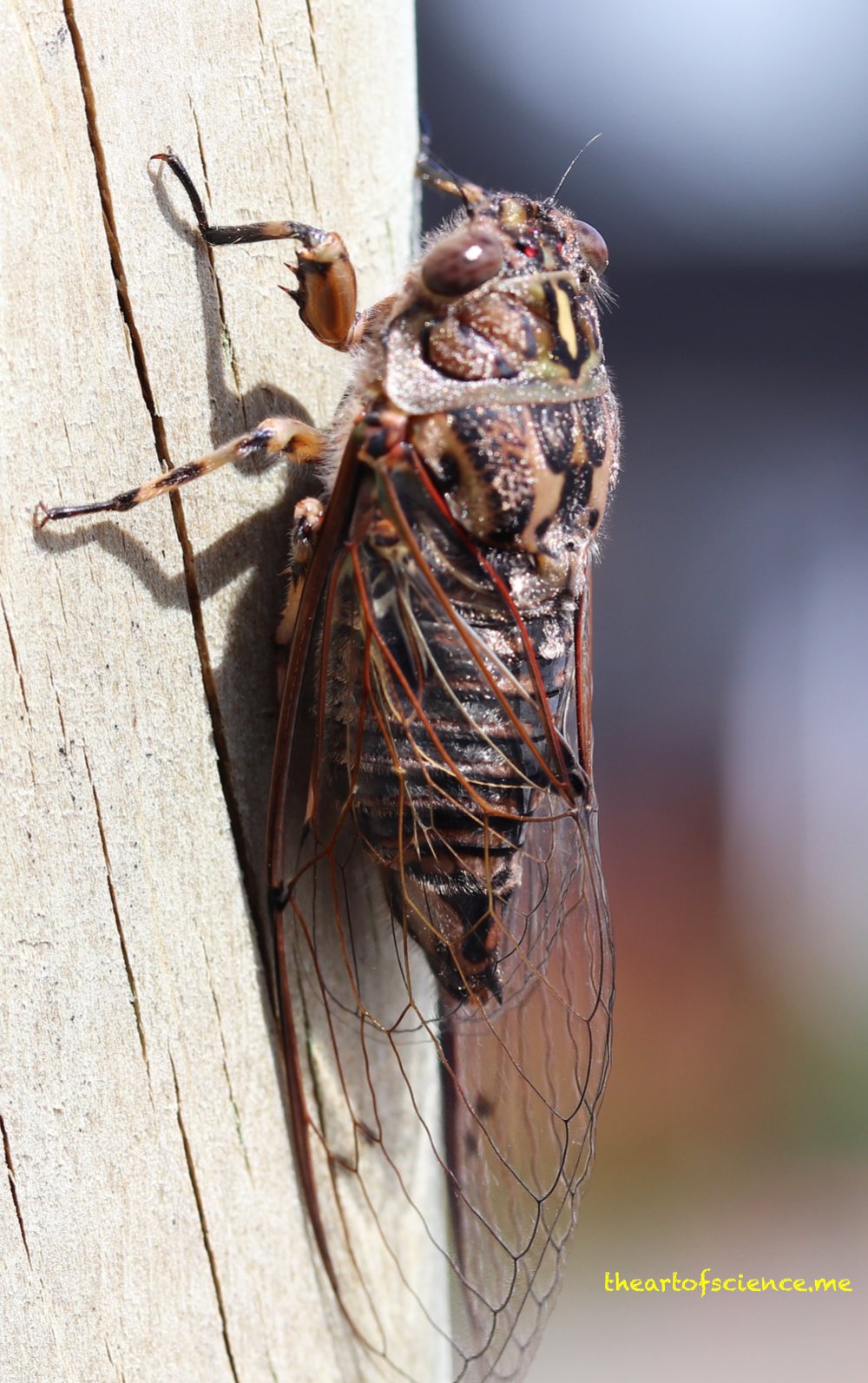I have my eyes on you, lots of them. The cicada’s eye view.
Noisy cicadas announce their presence.
Distinctive clicking sounds alerted me before I saw this wee critter. Further down the street, towards the trees, sounds from the massed cicada gathering were deafening.
Cicadas are loud, and other sounds drown in their incessant high-pitched buzz. Large numbers of these insects can generate sound levels greater than 100 decibels, similar to noisy power tools or a farm tractor. It’s hard to ignore the sound, it can be a relief when they switch off.
Cicadas navigate their airspace with the aid of five eyes. Two large compound eyes give them surround vision. Three tiny ruby-coloured dots between the compound eyes, ocelli, also send visual information to the brain.
Cicadas switch lenses as we change shades.
Ocelli, insect Polaroids.
Ocelli complement compound eyes. Their single corneal lens channels light to an array of sensory tubes.
Ocelli don’t form an image, however they detect a wide range of wavelengths.
Experiments have shown that ocelli in wasps, ants, and bees respond to the direction of a polarised light beam.
Actual image of a lone cicada wearing polaroids.
The individual structural unit is an ommatidium. The lens (blue), outer cone (white) and flanking pigments (yellow) channel light
They are typically hexagonal in cross section.
The compound eye in detail.
Closely packed units, Ommatidia generate vision within compound eyes.
The outer lens and crystalline cones channel light down into the receptor region.






